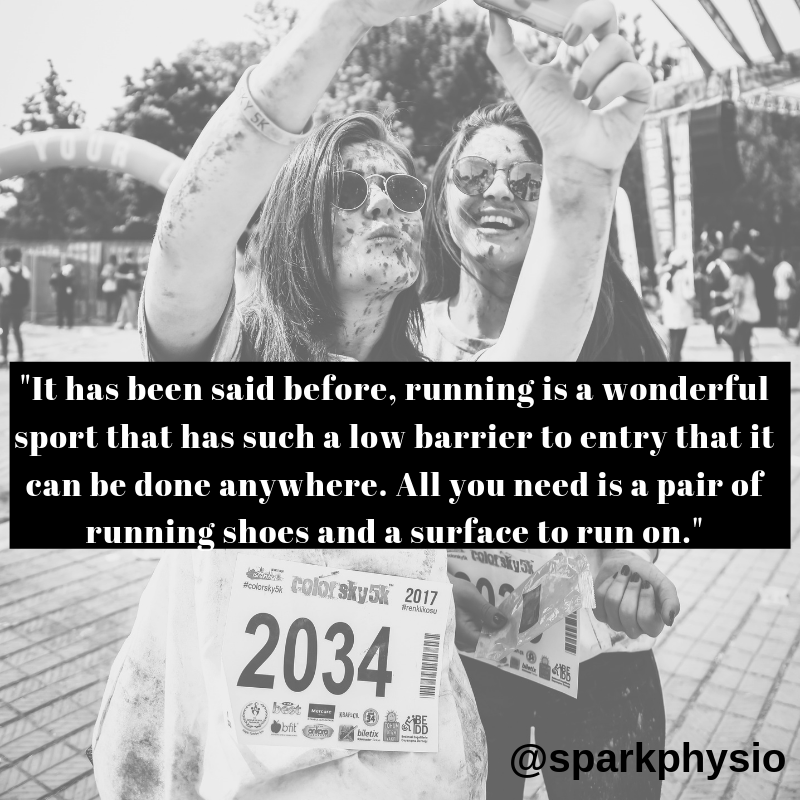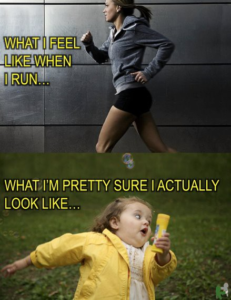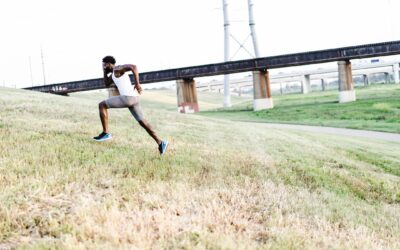
I just recently had a patient ask me about running injuries and why she is in pain during and after she run in the morning, and I wanted to give her a more complete answer with this blog…
During her first visit, she said she was trying to get her “summer body” ready for her impending family vacations. She knew she had to get “in shape” but she despised going to a gym. She figured she would just start running and said she pulled out her old running shoes from a few years ago and just started running 20-30 minutes every morning. But then she would have aches/pains in her hips, knees, and low back while she was on her run. It was tolerable, until recently, when the pain lingered throughout the day and she noticed it was impairing her ability to sit at her desk during work and doing some household cleaning.
Her main question during the evaluation and most people have the same question,
“Why Do I Hurt When I Run?”
What I told her, and a lot of people who come to me with running injuries is that running is a sport. It requires a certain amount of strength, balance, range of motion, stability, mobility, etc. Going from a period of inactivity/little activity to a sport without any preparation is setting yourself up for failure.
For example, I used to play basketball back in the day and used to be pretty good at shooting free throws (almost set a record for consecutive free throws made at a school that was over a 100 years old, thanks to coach for telling me about my potential record-breaker). I have not played basketball in well over 6 years. Do you think I could go out there and make 90/100 free throws? My odds say no.
That same principle can be taken for running. Our body gets deconditioned from not running and going through that range of motion, not used to jumping from leg to leg, or landing on and decelerating on one leg.
The Truth of Today’s World
Let’s face it, Amazon is ruining us. They are training us to live in a world of instant gratification. If you need a sports bottle and an electrolyte pack before your evening run, you can hop on Amazon and have it delivered prior to sun-down. This instant gratification carries over into all aspects of our lives. For example, you want to lose weight? You diet for a whole day, or even a week straight and you want those extra 20 pounds gone. It doesn’t happen like that. The same goes for training and building yourself up to be a runner. It doesn’t happen overnight.
It has been said before, running is a wonderful sport that has such a low barrier to entry that it can be done anywhere. All you need is a pair of running shoes and a surface to run on. This is good and bad. It is very convenient to be able to perform this anywhere, but people often forget the skill that is required for running.
There are 5 pillars that should be accounted for when you decide to train for running:
- Rest and Recovery
- Strength
- Mobility
- Stability
- Power
You should keep these pillars in mind when programming out a running program.
Having pain during or after running? Need help with trying to add these 5 pillars into your training?
Feel free to contact us to discuss how we can help you avoid injuries and get back to running in those fun runs, 10Ks, or marathons.




